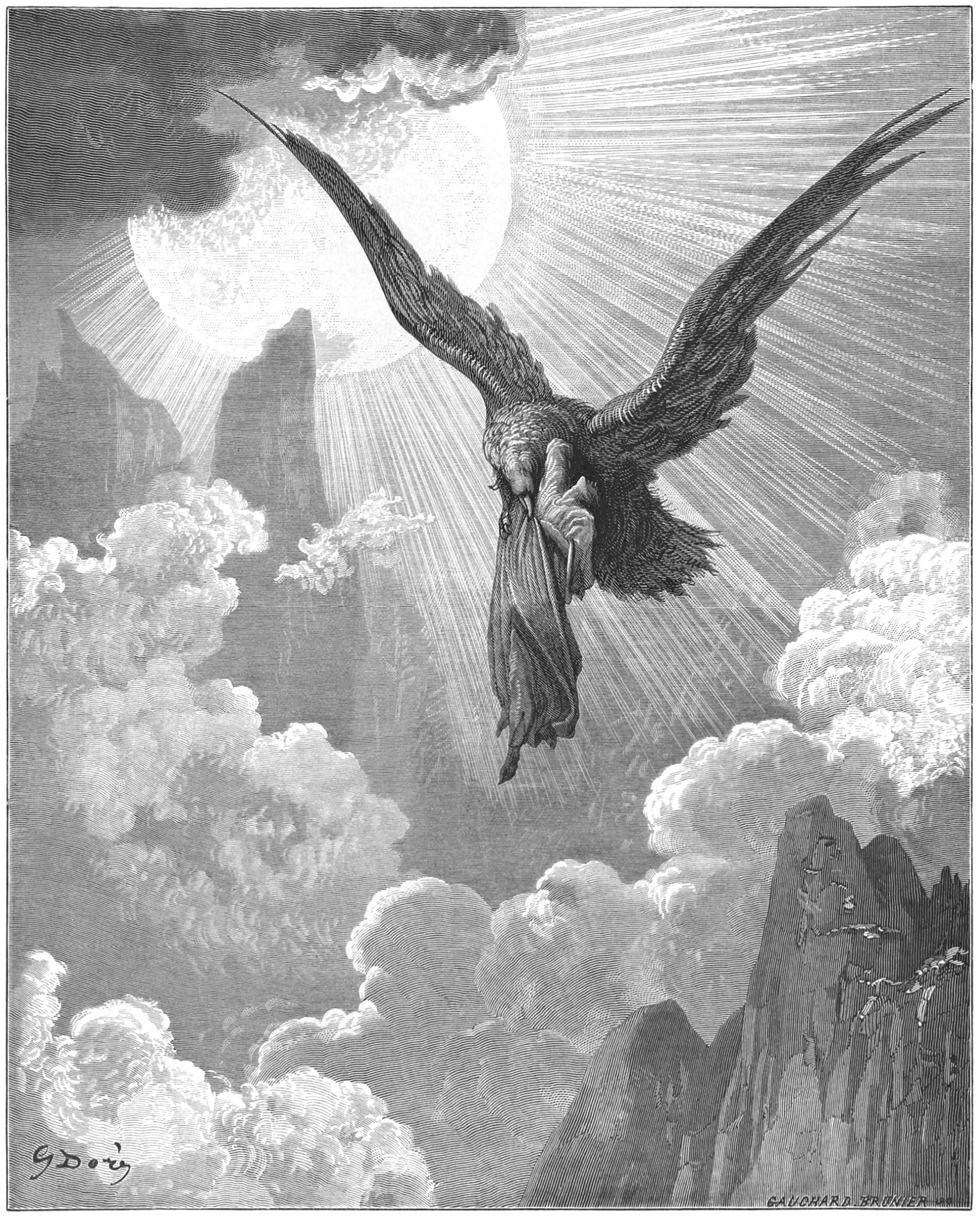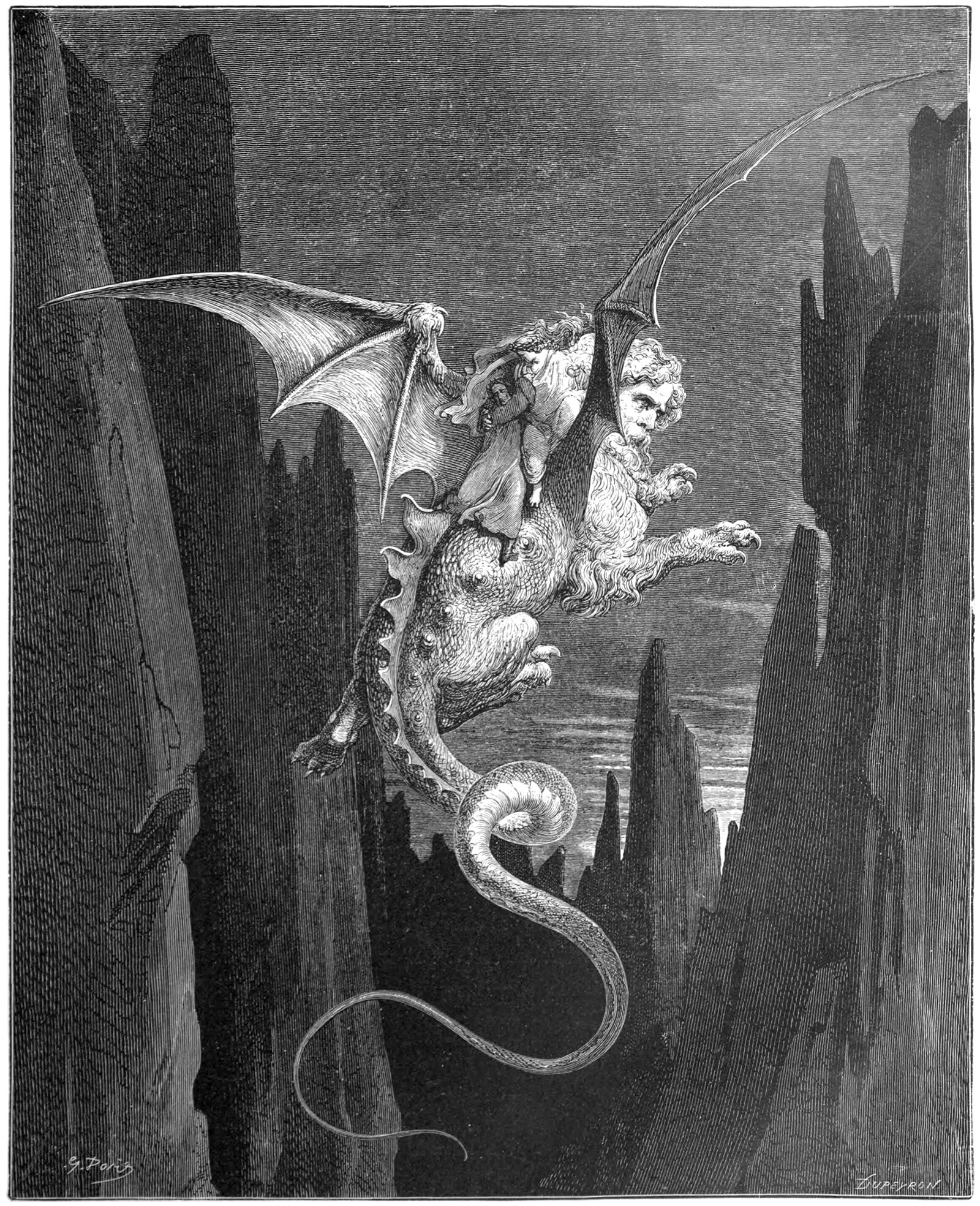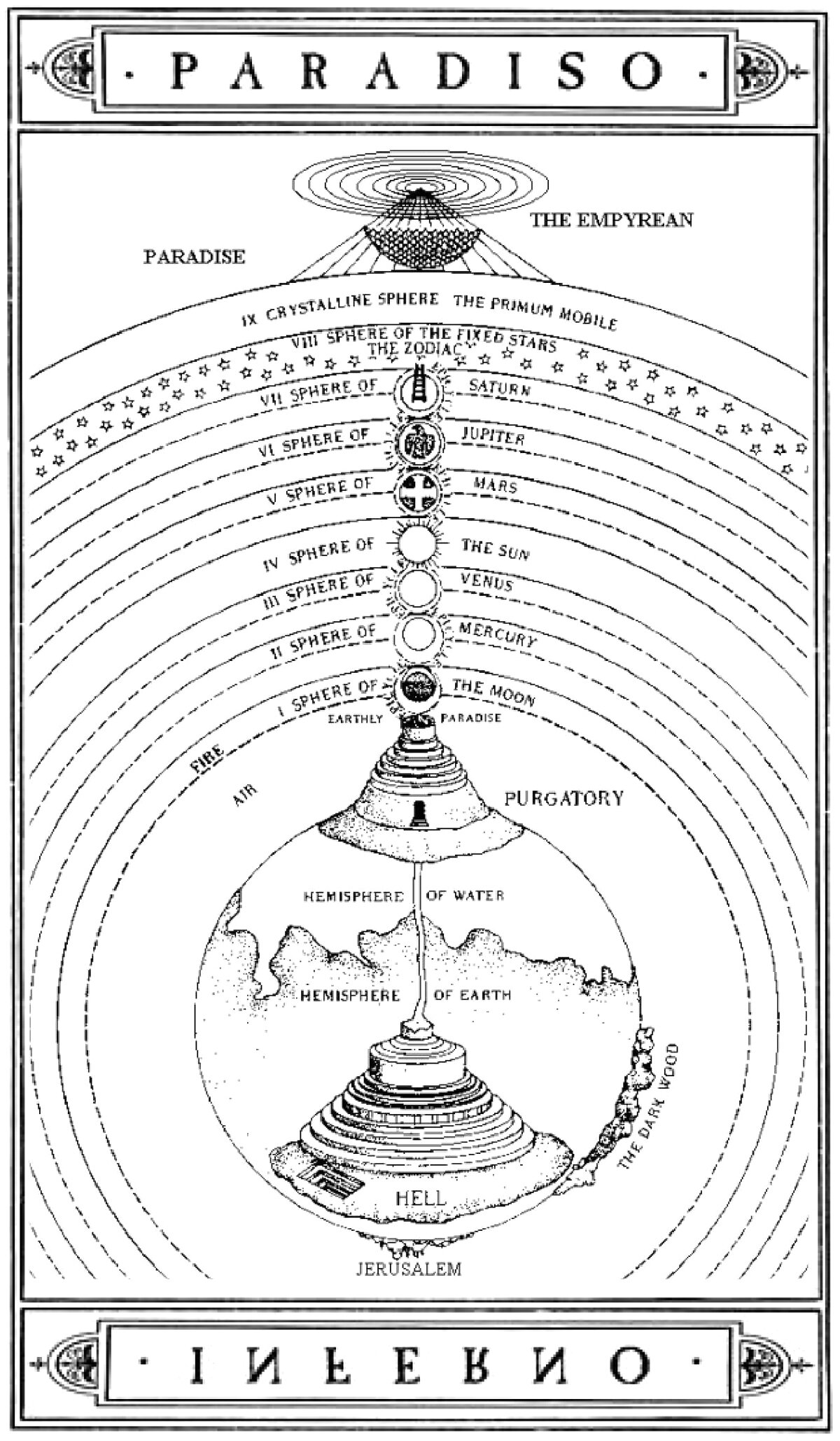Welcome to On Verticality. This blog explores the innate human need to escape the surface of the earth, and our struggles to do so throughout history. If you’re new here, a good place to start is the Theory of Verticality section or the Introduction to Verticality. If you want to receive updates on what’s new with the blog, you can use the Subscribe page to sign up. Thanks for visiting!
Click to filter posts by the three main subjects for the blog : Architecture, Flight and Mountains.

Dante and the Eagle
Pictured above is an illustration by Gustave Doré showing a scene from Dante’s Purgatorio. The scene takes place in Canto IX, as Dante is carried by an Eagle to the entry point of Purgatory. As I’ve previously written, the entire structure of Dante’s Divine Comedy is rooted in verticality, and this scene is just one example of this. Purgatory is a mountain which Dante must ascend in order to reach Paradise, or heaven.

The Flight of Geryon
The above illustration by Gustave Doré shows a scene from Dante’s Divine Comedy. The epic poem follows Dante and Virgil as they pass through Inferno, Purgatorio and Paradiso, and it deals with the concepts of Heaven and Hell, as well as the Seven Deadly Sins. This scene is from Canto XXVII of Inferno, when Dante and Virgil mount the back of the great beast Geryon and fly down from the seventh to the eighth circle of hell.
“O human race, born to fly upward, wherefore at a little wind dost thou so fall?”
-From The Divine Comedy, by Dante Alighieri, Italian poet and philosopher, 1265-1321.
“A greater fear I do not think there was ... when I perceived myself on all sides in the air, and saw extinguished the sight of everything but the monster.”
-From The Divine Comedy, by Dante Alighieri, Italian poet and philosopher, 1265-1321.
“The heavens call to you, and circle about you, displaying to you their eternal splendors, and your eye gazes only to earth.”
-From The Divine Comedy, by Dante Alighieri, Italian poet and philosopher, 1265-1321.

Dante’s Divine Comedy and the Vertical Worldview
Dante Alighieri’s epic poem La Divina Commedia, or The Divine Comedy in English, is widely considered one of the world’s greatest works of literature. It tells the fictional story of Dante and his soul’s experience after death. Throughout the story, Dante descends through Inferno, then ascends through Purgatorio and Paradiso. It’s a journey defined by the axis-mundi, and the entire work is rooted in verticality.
